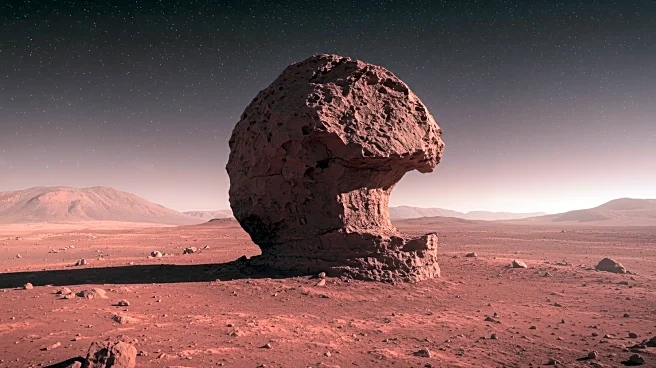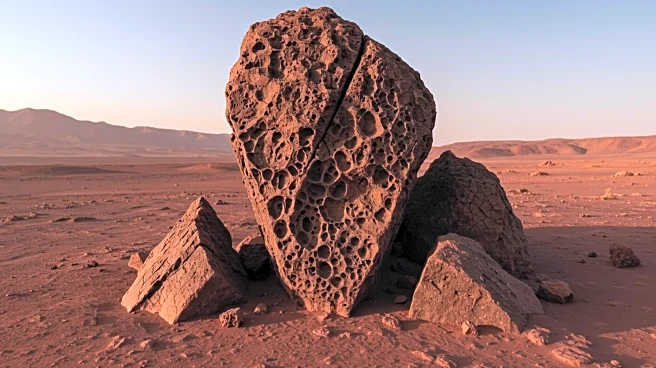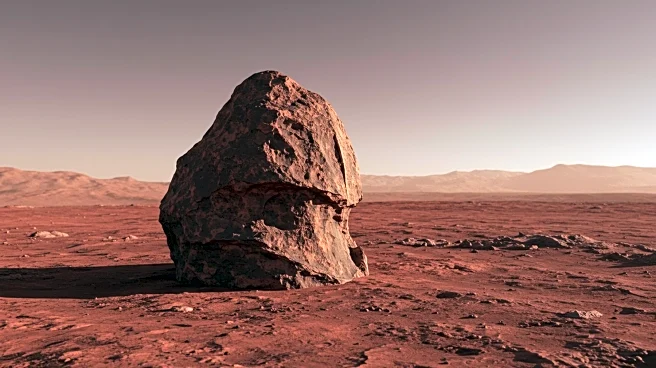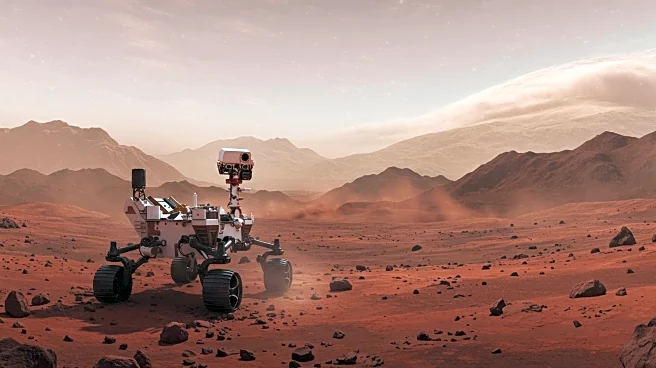What's Happening?
NASA's Perseverance rover has captured images of a peculiar rock formation on Mars that resembles an 'alien helmet.' The object, identified through the rover's Mastcam-Z, has a pointed peak with a nodular texture, reminiscent of ancient Earth armor. Despite its intriguing appearance, scientists caution that similar formations can occur naturally through volcanic processes and mineral precipitation. The rock, named Horneflya, is composed of spherules, which are small spheres formed by groundwater passing through sedimentary surfaces. This discovery adds to the growing list of fascinating geological features observed by NASA on Mars, contributing to the understanding of the planet's surface and history.
Why It's Important?
The discovery of the 'alien helmet' rock formation on Mars highlights the ongoing efforts by NASA to explore and understand the Red Planet's geological history. Such findings are crucial for piecing together Mars' past, potentially offering insights into its habitability and the presence of water. The Perseverance rover's mission is part of a broader scientific endeavor to gather data that could inform future human exploration of Mars. Understanding the planet's surface composition and geological processes is essential for assessing the risks and challenges of sending humans to Mars, particularly concerning cosmic radiation and environmental conditions.
What's Next?
NASA's continued exploration of Mars through the Perseverance rover and other missions will likely yield further discoveries that enhance our understanding of the planet. As scientists analyze the data collected by the rover, they may uncover more about Mars' geological features and history. These findings could inform future missions, including potential human exploration. The ongoing research and technological advancements in space exploration are paving the way for a deeper understanding of Mars and its potential for supporting life.











